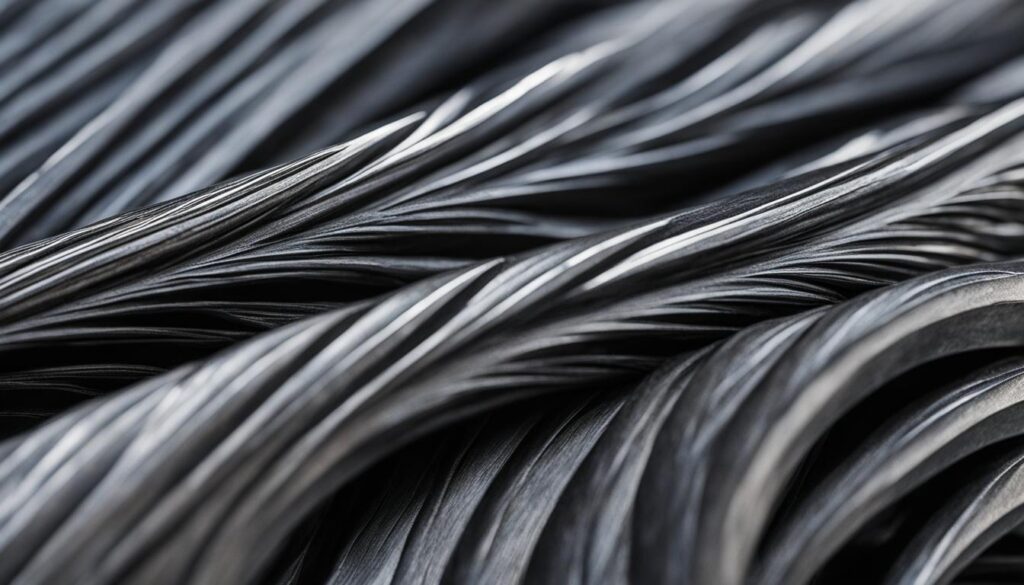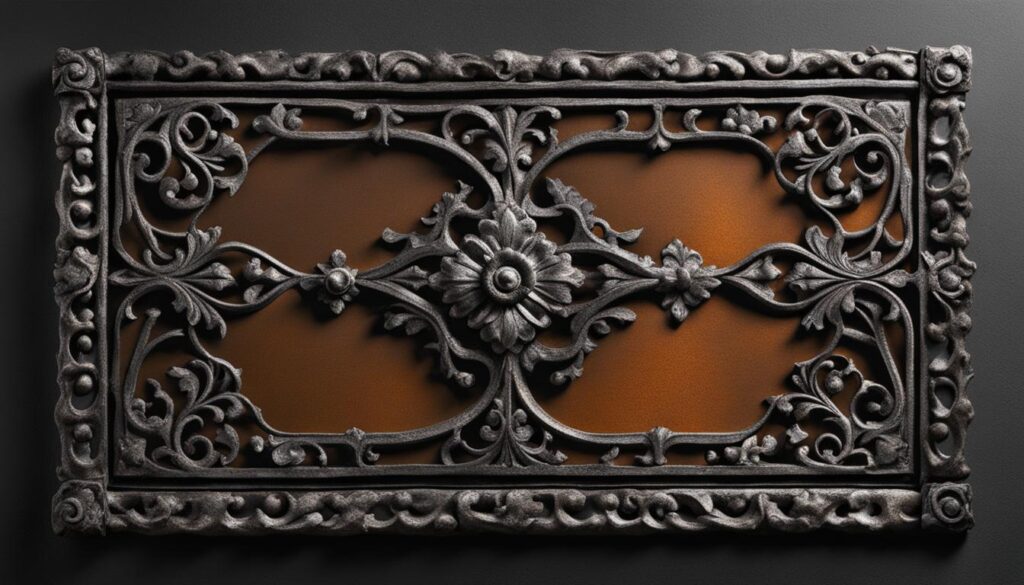Hello there! Today, I want to talk to you about the fascinating world of iron. Specifically, the difference between two types of iron that often get confused: cast iron and wrought iron. Understanding the disparities between these two materials is crucial, as they have distinct properties, durability, and usage in various industries.
Let’s start by discussing cast iron. This type of iron is known for its hardness and high compression strength. It is more brittle and less malleable compared to wrought iron or steel. Cast iron was widely used in construction before the availability of steel due to its strength. It is also commonly used in industry for its durability and ability to withstand high temperatures.
On the other hand, we have wrought iron. Wrought iron is softer and more ductile, meaning it can be heated and worked into various shapes. With each heating and working process, wrought iron becomes stronger. This makes it a preferred choice in commercial applications that require strength and flexibility.
Now that we have a brief understanding of the differences, let’s explore the specific properties and applications of cast iron and wrought iron in more detail.
Key Takeaways:
- Cast iron is harder and more brittle, while wrought iron is softer and more ductile.
- Cast iron is commonly used in construction, cookware, and mechanical engineering.
- Wrought iron is often used for fences, gates, railings, and other decorative applications.
- Cast iron has high compression strength and is more labor-intensive to produce.
- Wrought iron gets stronger the more it is worked and shaped.
Now that we’ve laid the groundwork, let’s dive deeper into the properties and applications of both cast iron and wrought iron. Stay tuned!
Properties of Cast Iron
When it comes to cast iron, there are several key properties that set it apart from other types of iron. Let’s explore these properties in more detail:
-
Melting Point: Cast iron has a lower melting point compared to steel. This means that it can be melted and poured into molds at a lower temperature, making it suitable for casting various shapes and sizes.
-
Fluidity: Another important property of cast iron is its fluidity. Due to its composition, cast iron has a higher carbon content, which gives it a more liquid-like consistency when it is in a molten state. This fluidity allows for intricate and detailed casting, making it a preferred material for complex industrial applications.
-
Labor-Intensive: Compared to forging wrought iron, casting cast iron is less labor-intensive. It involves pouring the molten iron into a mold, allowing it to solidify, and then removing the finished part. This casting process requires less manual labor and can be more cost-effective for large-scale production.
-
Compression Strength: Cast iron is known for its high compression strength. It can withstand heavy loads and pressures, making it ideal for applications where durability and strength are crucial.
To summarize, cast iron exhibits unique properties such as a lower melting point, enhanced fluidity, lower labor-intensity, and high compression strength. These characteristics make it a versatile material for various industrial applications.
Example of a Cast Iron Composition:
| Element | Percentage |
|---|---|
| Carbon | 2.0% – 4.0% |
| Silicon | 1.0% – 3.0% |
| Manganese | 0.1% – 1.0% |
| Sulfur | 0.02% – 0.3% |
| Phosphorus | 0.02% – 1.0% |
Note: The composition of cast iron may vary depending on the specific requirements of the application.
Now that we have explored the properties of cast iron, let’s move on to understanding the properties of wrought iron in the next section.
Properties of Wrought Iron
When it comes to the properties of wrought iron, several key characteristics set it apart from other types of iron. Its unique combination of malleability, ductility, and strength make it a versatile and highly desirable material in many commercial applications.
Wrought iron is highly malleable, which means it can be easily shaped and formed. This property allows craftsmen to heat, re-heat, and manipulate the iron into intricate designs and structures. Whether it’s ornate railings, decorative gates, or stunning furniture, wrought iron’s malleability ensures the creation of intricate and visually appealing pieces.
Furthermore, wrought iron is more ductile compared to cast iron. Its ductility refers to its ability to undergo deformation without fracturing. This quality allows wrought iron to withstand bending and stretching without breaking, making it a durable and long-lasting material.
But what truly sets wrought iron apart is its strength. As it is worked and shaped, wrought iron gains strength, making it suitable for structural purposes. This characteristic makes it ideal for applications that require both aesthetics and durability, such as bridges, balconies, and outdoor furniture.
“Wrought iron’s malleability and ductility make it a go-to material for achieving intricate designs while maintaining strength and durability.”
To visualize the unique properties of wrought iron, we can compare its key features with those of cast iron.
| Property | Wrought Iron | Cast Iron |
|---|---|---|
| Malleability | High | Low |
| Ductility | High | Low |
| Strength | Increases with working | High compression strength |
As the table above shows, wrought iron surpasses cast iron in both malleability and ductility. While cast iron exhibits high compression strength, wrought iron’s strength improves with each working, enabling it to withstand various loads and stresses.

Applications of Cast Iron and Wrought Iron
Both cast iron and wrought iron have a wide range of applications in various industries. Let’s explore some of the key uses for each:
Cast Iron Applications
Cast iron is a versatile material that finds its applications in several areas, including:
- Cookware: Cast iron is known for its excellent heat retention properties, making it ideal for cookware such as skillets, Dutch ovens, and griddles.
- Mechanical Engineering: Cast iron’s high compression strength makes it suitable for manufacturing machinery components, engine blocks, pipes, and fittings.
- Construction Products: Cast iron is used to create various construction products, including pipes, manhole covers, and drainage systems.
Wrought Iron Applications
Wrought iron is valued not only for its strength but also for its aesthetic appeal. Some of the common applications of wrought iron include:
- Fences and Gates: Wrought iron fences and gates add a touch of elegance to residential and commercial properties while maintaining security and durability.
- Railings: Wrought iron railings are popular for their timeless beauty and provide safety and support on staircases, balconies, and terraces.
- Roof Cresting: Wrought iron roof cresting enhances the architectural charm of buildings, adding intricate designs and decorative elements to rooftops.
- Hardware: Wrought iron hardware such as door handles, hinges, and knobs are sought after for their durability and visual appeal.
These applications demonstrate the diverse utilization of both cast iron and wrought iron in various industries, catering to different functional and aesthetic requirements.
| Applications | |
|---|---|
| Cast Iron | Wrought Iron |
| Cookware (skillets, Dutch ovens, griddles) | Fences and Gates |
| Mechanical Engineering (machinery components, engine blocks, pipes, fittings) | Railings |
| Construction Products (pipes, manhole covers, drainage systems) | Roof Cresting |
| – | Hardware (door handles, hinges, knobs) |
Conclusion
In conclusion, the difference between cast iron and wrought iron lies in their distinct properties and manufacturing processes. Cast iron is harder, more brittle, and easier to produce, making it suitable for various industrial applications. On the other hand, wrought iron is softer, more ductile, and stronger, making it ideal for commercial uses.
Cast iron, with its high compression strength, has been widely used in construction and mechanical engineering before the advent of steel. Its lower melting point and fluidity make it favorable for casting processes, which are less labor-intensive compared to forging wrought iron.
Wrought iron, known for its malleability, can be heated, worked, and shaped into intricate designs. It is commonly used in applications that require both strength and aesthetic appeal, such as fences, gates, railings, and decorative hardware. The more wrought iron is worked, the stronger it becomes, adding to its durability.
In summary, while both cast iron and wrought iron are types of iron, their properties and applications set them apart. Cast iron’s hardness and ease of production make it suitable for industrial purposes, while wrought iron’s softness, ductility, and strength make it an excellent choice for commercial and decorative applications.
FAQ
What is the difference between cast iron and wrought iron?
Cast iron is harder, more brittle, and not as malleable as wrought iron. It has a higher compression strength and was widely used in construction before steel became available. On the other hand, wrought iron is softer, more ductile, and can be heated and worked into various shapes. It gets stronger the more it is worked.
What are the properties of cast iron?
Cast iron has a lower melting point compared to steel and is more fluid, making it suitable for casting. It is also less labor-intensive to cast a part rather than forging a wrought-iron version. Cast iron has high compression strength and is commonly used in industrial applications.
What are the properties of wrought iron?
Wrought iron is highly malleable and can be heated, re-heated, and worked into various shapes. It is softer and more ductile compared to cast iron. Wrought iron gets stronger the more it is worked and is often used in commercial applications due to its strength.
What are the applications of cast iron and wrought iron?
Cast iron is commonly used for manufacturing cookware, mechanical engineering devices, and construction products. Wrought iron is often used in applications that require an aesthetically pleasing look, such as fences, gates, railings, roof cresting, and hardware.


